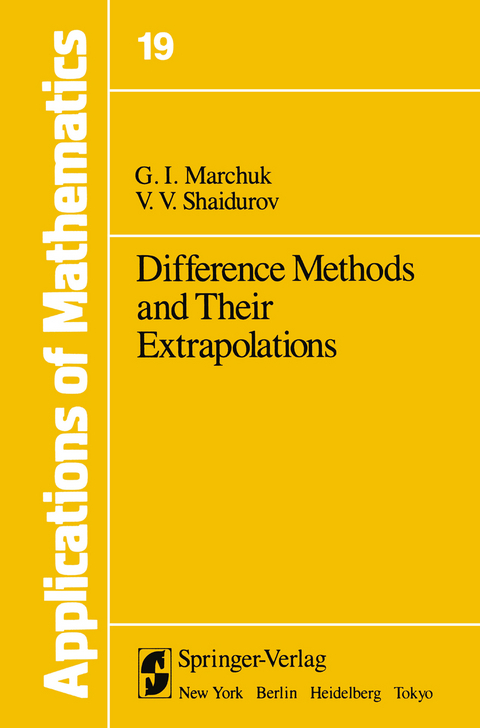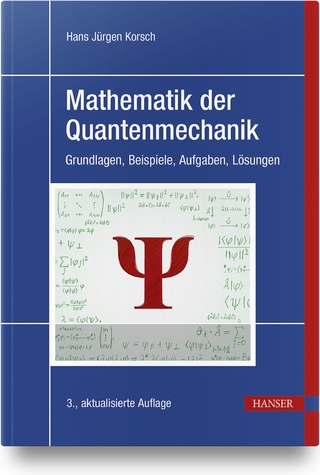
Difference Methods and Their Extrapolations
Springer-Verlag New York Inc.
978-0-387-90794-9 (ISBN)
- Titel z.Zt. nicht lieferbar
- Versandkostenfrei innerhalb Deutschlands
- Auch auf Rechnung
- Verfügbarkeit in der Filiale vor Ort prüfen
- Artikel merken
The stimulus for the present work is the growing need for more accurate numerical methods. The rapid advances in computer technology have not provided the resources for computations which make use of methods with low accuracy. The computational speed of computers is continually increasing, while memory still remains a problem when one handles large arrays. More accurate numerical methods allow us to reduce the overall computation time by of magnitude. several orders The problem of finding the most efficient methods for the numerical solution of equations, under the assumption of fixed array size, is therefore of paramount importance. Advances in the applied sciences, such as aerodynamics, hydrodynamics, particle transport, and scattering, have increased the demands placed on numerical mathematics. New mathematical models, describing various physical phenomena in greater detail than ever before, create new demands on applied mathematics, and have acted as a major impetus to the development of computer science. For example, when investigating the stability of a fluid flowing around an object one needs to solve the low viscosity form of certain hydrodynamic equations describing the fluid flow. The usual numerical methods for doing so require the introduction of a "computational viscosity," which usually exceeds the physical value; the results obtained thus present a distorted picture of the phenomena under study. A similar situation arises in the study of behavior of the oceans, assuming weak turbulence. Many additional examples of this type can be given.
1 General Properties.- 1.1. The Simplest Example.- 1.2. Expansion Theorems.- 1.3. Acceleration of Convergence.- 1.4. Correction by Higher-Order Differences.- 1.5. Various Extrapolation Methods.- 1.6. The Effects of Computational Errors.- 2 First-Order Ordinary Differential Equations.- 2.1. The Crank-Nicholson Scheme.- 2.2. Explicit Difference Schemes.- 2.3. The Splitting-Up Method for Systems of Equations.- 2.4. Equations with Singularities.- 3 The One-Dimensional Stationary Diffusion Equation.- 3.1. The Dirichlet Problem.- 3.2. Boundary-Value Problems of the Third Kind.- 3.3. Equations with Discontinuous Coefficients.- 3.4. The Sturm-Liouville Problem.- 3.5. Improving the Accuracy of the Finite Elements Method.- 3.6. The Quasilinear Problem.- 4 Elliptic Equations.- 4.1. The Statement of the Problem.- 4.2. Difference Methods for the Dirichlet Problem on a Domain with a Smooth Boundary.- 4.3. The Dirichlet Problem in a Rectangle.- 4.4. A Quasilinear Equation in a Triangular Region.- 4.5. On the Diffraction Problem.- 4.6. On the Separation of Singularities.- 5 Nonstationary Problems.- 5.1. The Simplest Type of Parabolic Equation.- 5.2. Increasing the Accuracy of the Splitting-Up Method.- 5.3. The Two-Dimensional Heat Equation.- 5.4. The Equation of Motion.- 6 Extrapolation for Algebraic Problems and Integral Equations.- 6.1. Regularization of a Singular System of Linear Algebraic Equations.- 6.2. Regularization of a System with a Selfadjoint Matrix.- 6.3. Extrapolation of Solutions Containing Boundary-Layer Functions.- 6.4. The Fredholm Equation of the Second Kind.- 6.5. The Volterra Equation of the Second Kind.- 6.6. The Volterra Equation of the First Kind.- 7 Appendix.- 7.1. Expansion of Difference Relations in the Mesh-Size.- 7.2. On the Solution of Some Special Systems of Equations.- 7.3. Some Results on the Lagrange Interpolation Polynomials.- List of Notation.
| Reihe/Serie | Stochastic Modelling and Applied Probability ; 19 |
|---|---|
| Zusatzinfo | 334 p. |
| Verlagsort | New York, NY |
| Sprache | englisch |
| Themenwelt | Mathematik / Informatik ► Mathematik ► Analysis |
| Mathematik / Informatik ► Mathematik ► Angewandte Mathematik | |
| ISBN-10 | 0-387-90794-7 / 0387907947 |
| ISBN-13 | 978-0-387-90794-9 / 9780387907949 |
| Zustand | Neuware |
| Haben Sie eine Frage zum Produkt? |
aus dem Bereich


